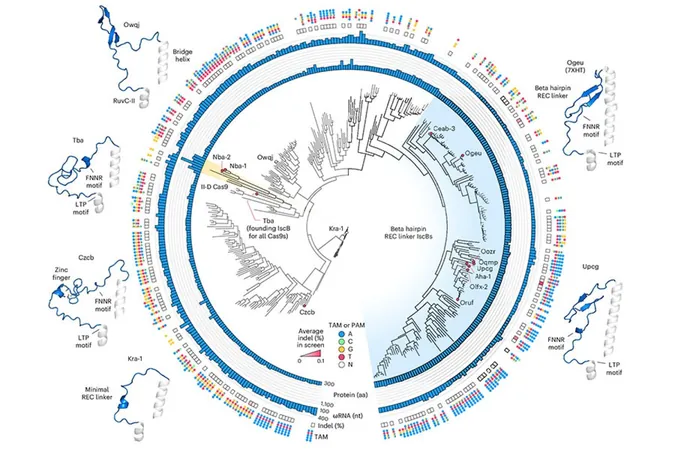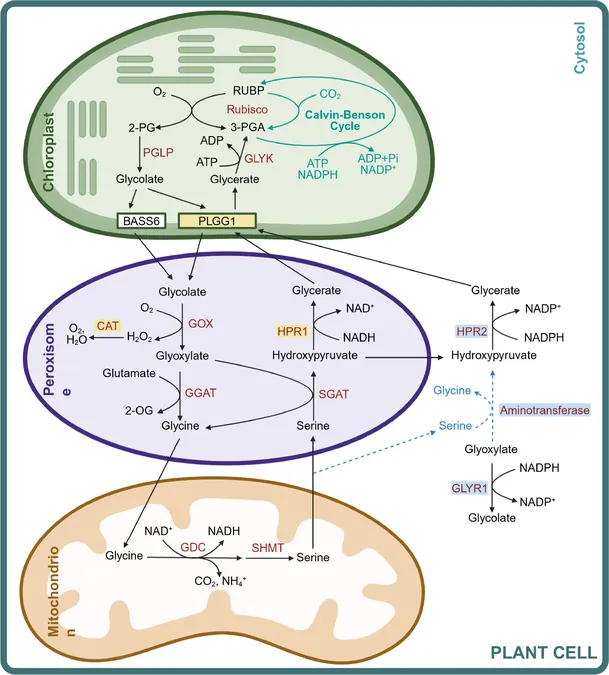
Breakthrough in Gene Therapy: Scientists Unveil Compact Tool for Precision DNA Editing
2025-05-28
Author: Nur
A Revolutionary Step in Gene Editing Technology
In a remarkable scientific breakthrough, researchers from MIT's McGovern Institute for Brain Research and Broad Institute have engineered a compact, RNA-guided enzyme that transforms into a powerful, programmable tool for editing human DNA. This innovative protein, named NovaIscB, offers promise for advancing gene therapies aimed at treating and preventing various diseases.
Compact Size, Stellar Performance
NovaIscB distinguishes itself with its small size, making it easier for delivery into cells compared to traditional tools. Feng Zhang, a prominent figure in the field and a professor at MIT, leads the initiative. His team's findings were published in the open-access journal Nature Biotechnology, highlighting the enzyme's potential to make targeted modifications to genetic sequences.
The Evolution of IscB Enzymes
The journey to create NovaIscB began with a focus on IscBs—enzymes derived from bacterial DNA cutters. These proteins, discovered by Zhang's lab in 2021, are significantly smaller than Cas9, a widely-used enzyme in the CRISPR gene-editing toolkit. The reduced size of IscBs is a game-changer for gene therapy, as compact editing tools can be delivered more efficiently.
Ingenious Engineering for Human Application
Initially tested on 400 different IscB enzymes, the research team identified ten capable of editing DNA in human cells. However, none were optimal for therapeutic use, prompting an extensive engineering effort led by graduate student Soumya Kannan and postdoc Shiyou Zhu. The challenge was to enhance activity specifically on target sequences without triggering unintended genomic alterations.
Harnessing AI for Precision Engineering
To fine-tune the enzyme, the team leveraged insights from evolutionary biology and cutting-edge AI technologies like AlphaFold2. By strategically swapping components of the IscB enzymes, they developed NovaIscB, which ultimately exhibited over 100 times the editing efficiency in human cells compared to its predecessors.
Unleashing NovaIscB's Potential
NovaIscB not only mirrors the functionality of Cas9 but also takes customization a step further. Researchers demonstrated its versatility by successfully editing specific letters of the DNA sequence and modulating gene activity in human cells. Its small size allows for effective packaging into adeno-associated viruses (AAV), the preferred delivery vehicle for gene therapies.
Real-World Applications in Sight
To showcase NovaIscB’s practical implications, the researchers developed OMEGAoff, a tool designed to add chemical markers to suppress specific genes. In animal trials, they effectively repressed a gene linked to cholesterol management, resulting in significant reductions in blood cholesterol levels.
The Future of Gene Therapy
The researchers are optimistic about the widespread application of NovaIscB in gene therapy, anticipating it will target most human genes effectively. They also encourage other scientists to adopt their evolution-inspired approach to rational protein engineering, emphasizing that harnessing nature's diversity can lead to even better innovations in the future.




 Brasil (PT)
Brasil (PT)
 Canada (EN)
Canada (EN)
 Chile (ES)
Chile (ES)
 Česko (CS)
Česko (CS)
 대한민국 (KO)
대한민국 (KO)
 España (ES)
España (ES)
 France (FR)
France (FR)
 Hong Kong (EN)
Hong Kong (EN)
 Italia (IT)
Italia (IT)
 日本 (JA)
日本 (JA)
 Magyarország (HU)
Magyarország (HU)
 Norge (NO)
Norge (NO)
 Polska (PL)
Polska (PL)
 Schweiz (DE)
Schweiz (DE)
 Singapore (EN)
Singapore (EN)
 Sverige (SV)
Sverige (SV)
 Suomi (FI)
Suomi (FI)
 Türkiye (TR)
Türkiye (TR)
 الإمارات العربية المتحدة (AR)
الإمارات العربية المتحدة (AR)